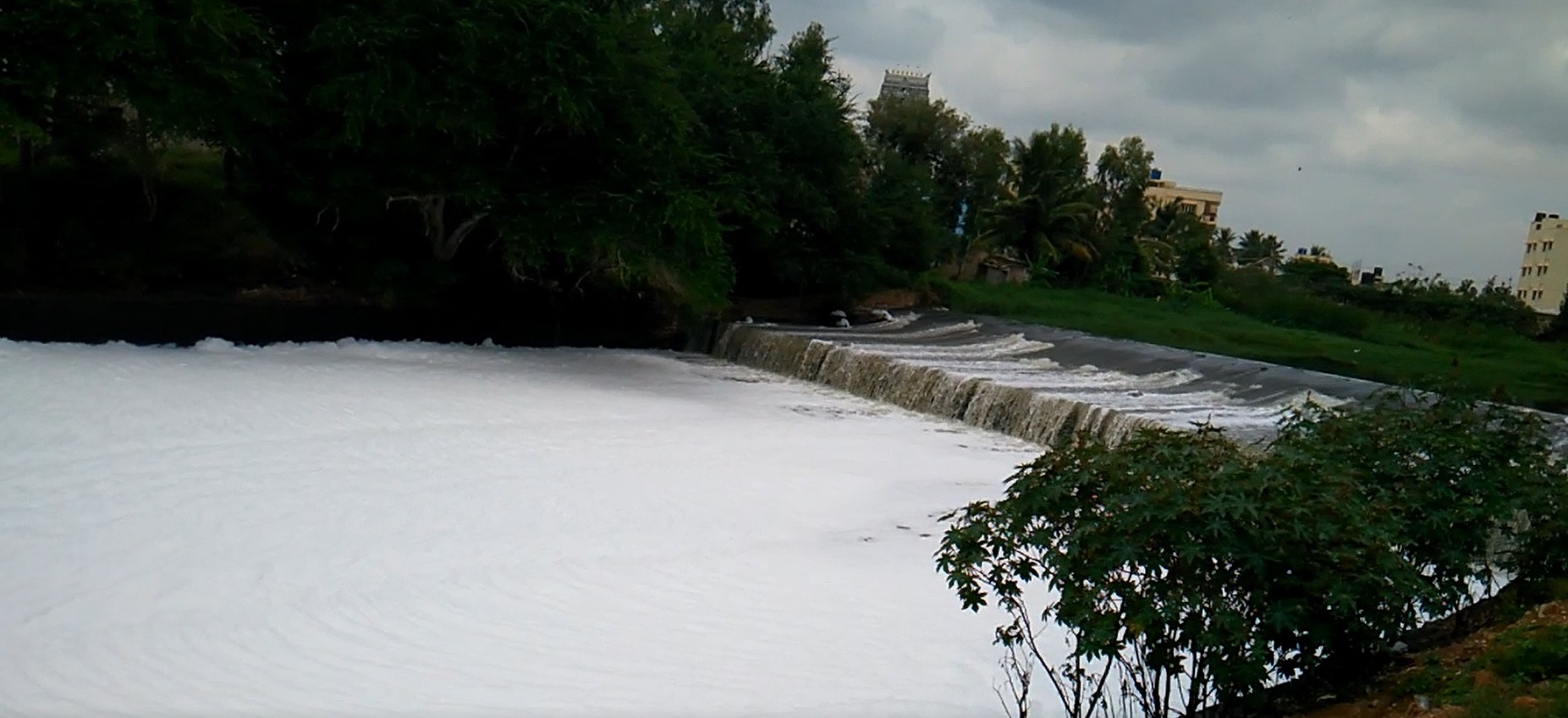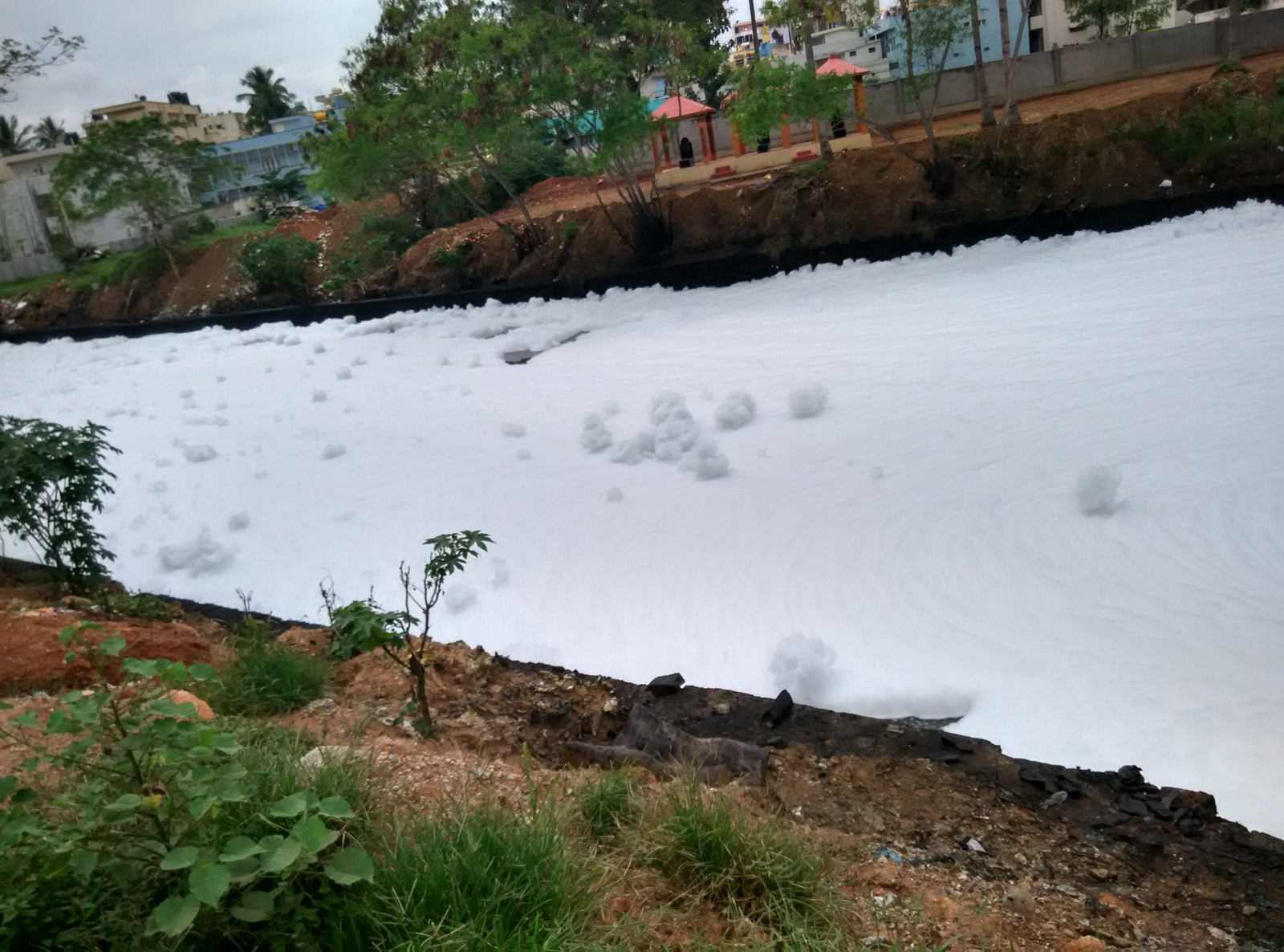6 June 2023
–Malavika P Pillai (with input from authors)
The mystery of the unpredictable and heavy foaming in Bengaluru’s Bellandur lake has baffled scientists, regulators and citizens. Several theories have been put forth, and control measures taken, yet the foam continues to form year after year. A team from the Centre for Sustainable Technologies (CST), Indian Institute of Science (IISc), has been monitoring this foam continuously for the last four years in order to unravel this mystery.
One of the reasons why the foaming has puzzled scientists is because it counterintuitively increases only after heavy rains, which are supposed to dilute pollutants in the lake that may be causing the foaming. In a study published in Science of the Total Environment, the researchers have uncovered the reason behind this peculiarity.
The team highlights three factors that are key to this foaming. The first is untreated sewage that enters the lake. Because the lake is large, the sewage takes 10-15 days to disperse through the lake; during this time, a part of the organic material gets degraded in the absence of oxygen and settles down as sludge. As more and more sewage flows through the lake, surfactants in the sewage do not decompose and instead get loosely attached to the settled sludge, gradually increasing in concentration – in some cases, up to 200 times the original concentration entering the lake, points out Chanakya HN, Chief Research Scientist at CST and one of the authors of the study. “Imagine adding one full scoop of washing powder into a bucket of water; it will definitely foam given the right conditions,” he explains.

Foam buildup at main outlet after heavy rain (Photo: Chanakya HN)
The second factor is heavy rainfall that brings in large quantities of run-off from the city into the lake overnight. This high-volume inflow appears to churn up the surfactant-laden sludge, dislodge the accumulated surfactant from the sludge, and bring it back into solution, making it ready to foam. Deep inside the lake itself, there is little foam, because air bubbles do not form. However, as the water level in the lake rises due to rains, the excess water containing large concentrations of the surfactants spills over into the lake’s outlet to depths as high as 25 feet, trapping air bubbles which turn into foam. “This is an important phenomenon that converts the surfactant-laden water into foam,” says Lakshminarayana Rao, Associate Professor at CST and one of the authors.
In addition to these two factors, the researchers also suggest that suspended solids containing certain bacteria might be responsible for foam formation and stability – the mechanisms involved need to be validated through further experiments.
To study the foam formation, the researchers collected water samples from the lake, analysed various parameters, and recreated a lab model to track the changes in chemical composition of the surfactants across different regions of the lake as well as at different times of the year. “I had to go to the lake every month over the years to collect water and foam samples, and conduct experiments on them,” says Reshmi Das, PhD student at CST and first author of the study. She took the help of officials from the Bangalore Water Supply and Sewerage Board (BWSSB) and Bangalore Development Authority (BDA) to collect the samples.

The stable foam travels along a 10m deep valley up to a few kilometres before being dispersed (Photo: Chanakya HN)
Recent analysis by the team also suggests that a single type of surfactant commonly used in most of the household washing powders and shampoos plays a dominant role in driving this foaming.
In a typical sewage treatment plant, these surfactants are subject to biodegradation and most of them are removed. The authors propose that stopping the entry of untreated sewage into the lake is crucial to prevent the build-up of surfactants and sludge, their churning, and the resulting foaming at the outfall. They also suggest that wherever this is not immediately possible, removing the accumulated sludge in the polluted lakes – at least before the rains – as well as proper disposal of it can help address this burning issue.
REFERENCE:
Das R, Chanakya HN, Rao LN, Unravelling the reason for seasonality of foaming in sewage-fed urban lakes, Science of The Total Environment (2023).
CONTACT:
Reshmi Das
PhD student
Centre for Sustainable Technologies (CST)
Indian Institute of Science (IISc)
Email: reshmidas@iisc.ac.in
Chanakya HN
Chief Research Scientist
Centre for Sustainable Technologies (CST)
Indian Institute of Science (IISc)
Email: chanakya@iisc.ac.in
Phone: 080-2293 3046
Lakshminarayana Rao
Associate Professor
Centre for Sustainable Technologies (CST)
Indian Institute of Science (IISc)
Email: narayana@iisc.ac.in
Phone: 080-2293 2051
Lab website: https://www.plasmalabiisc.com/
NOTE TO JOURNALISTS:
a) If any of the text in this release is reproduced verbatim, please credit the IISc press release.
b) For any queries about IISc press releases, please write to news@iisc.ac.in or pro@iisc.ac.in.



